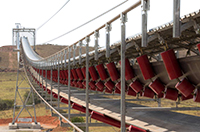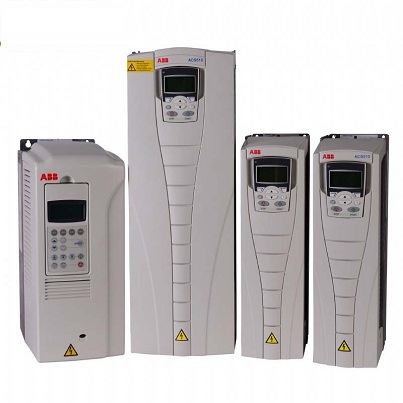1. Before the inverter is powered on
The temperature and humidity of the surrounding environment should be detected first. If the temperature is too high, the inverter will overheat alarm. In severe cases, the inverter power device will be damaged and the circuit will be short-circuited. If the air is too humid, the inverter will be directly short-circuited. When the inverter is running, pay attention to whether its cooling system is in normal production, such as whether the air duct is smooth or not, and whether the fan has abnormal sound. Generally, inverters with higher protection level, such as: IP20 and above, can be directly installed. The inverters below IP20 should be cabinet-mounted, so the heat dissipation effect of the inverter will directly affect the normal operation of the inverter. Exhaust system, such as whether the fan rotates smoothly, whether there is dust and obstruction at the air inlet is a place that we can not ignore in daily inspection. Whether the motor reactor, transformer, etc. are overheated, have odor; whether the inverter and the motor have abnormal noise; whether the inverter panel current display is too large or the current change range is too large, and whether the output UVW three-phase voltage and current are balanced.
2. Regular maintenance
Regular dust removal check whether the fan air inlet is blocked, and clean the air filter cooling air duct and internal dust every month.
Regular inspections should be carried out once a year: check whether the screws, bolts and plug-ins are loose, whether the grounding and phase-to-phase resistance of the input and output reactors are short-circuited, and should be greater than several tens of megaohms. Whether the conductor and the insulator are corroded, if necessary, wipe it with alcohol in time. Measure the smoothness of the voltage of each circuit output of the switching power supply, such as: 5V, 12V, 15V, 24V and other voltages. Whether the contact of the contactor has a fire mark, it is necessary to replace the new contactor of the same model or larger than the original capacity; confirm the correctness of the control voltage, perform the sequence protection action test; confirm that the
protection display circuit is not abnormal; confirm that the inverter is The balance of the output voltage when operating alone.
Carefully do the daily maintenance and repair of the inverter, the main contents include:
(1) Regularly dedusting the inverter, focusing on the rectifier cabinet, the inverter cabinet and the control cabinet. If necessary, the rectifier module, the inverter module and the circuit board in the control cabinet can be removed for dust removal. Whether the air inlet and upper air outlet of the inverter are dusty or blocked due to excessive dust accumulation. The frequency converter has a large amount of ventilation due to its own heat dissipation. Therefore, after a certain period of operation, the surface area dust is very serious and must be cleaned regularly.
(2) Open the front door of the inverter, disassemble the rear door, carefully check whether the AC and DC busbars are deformed, corroded, oxidized, whether the screws at the joints of the busbars are loose, and whether the screws at the fixed points are loose or not. Whether the insulating sheet or the insulating column for fixing has aging cracking or deformation, if it should be replaced in time, re-tighten, and the busbar that has been deformed must be corrected and reinstalled.
(3) After dust removal of circuit boards and busbars, carry out the necessary anti-corrosion treatment, apply insulating varnish, and remove the burrs of the busbars that have appeared partial discharge and arcing before processing. For insulation boards that have been insulated and penetrated, the damaged parts shall be removed, and the insulation boards of the corresponding insulation grade shall be insulated in the vicinity of their damage, and the insulation shall be tightened and tested and deemed to be qualified before being put into use.
(4) Whether the fan running and rotating in the rectifier cabinet and the inverter cabinet are normal. When the machine is stopped, turn it by hand to observe whether the bearing has stuck or noise, and replace the bearing or repair if necessary.
(5) Thoroughly inspect the input, rectification and inverter, and DC input fast-melting, and find that the burning is replaced in time.
(6) Whether the capacitor in the intermediate DC circuit has leakage, whether the casing is expanded, bubbling or deformed, whether the safety valve is broken, and the capacitor capacity, leakage current, and withstand voltage can be tested under conditions, which does not meet the requirements. The capacitors are replaced. For new capacitors or unused capacitors that have been unused for a long time, they must be passivated before replacement. The usage period of the filter capacitor is generally 5 years. If the usage time is more than 5 years, the capacitance capacity, leakage current, and withstand voltage are obviously deviated from the detection standard, and should be replaced partially or completely as appropriate.
(7) Conduct electrical inspection on the rectifier and inverter part diodes and GTO multimeter, measure the forward and reverse resistance values, and carefully record in the prepared form to see if the resistance between the poles is normal. , the same type of device is consistent, and replace if necessary.
(8) Check the main contactor and other auxiliary contactors in the A1 and A2 incoming cabinets, and carefully observe whether the contactors of the contactors have arcing, burrs or surface oxidation, unevenness, and find such problems. The corresponding moving and static contacts are replaced to ensure that the contact is safe and reliable.
(9) Carefully check whether the terminal block is aging or loose, whether there is a hidden fault in the short circuit, whether the connection of each cable is firm, whether the wire is damaged or not, and whether the plugs of each circuit board are firmly connected. Whether the connection to and from the main power line is reliable, whether there is heat generation and oxidation at the connection, and whether the grounding is good.
(10) Whether the reactor has abnormal squeaking, vibration or odor.
In addition, the conditional DC waveform, inverter output waveform and input power harmonic components can be measured.
Third, the replacement of spare parts
The frequency converter is composed of various components, some of which will gradually reduce and age after long-term operation. This is also the main reason for the failure of the inverter. In order to ensure the long-term normal operation of the equipment, the following components should be replaced regularly:
(1) Cooling fan
The power module of the frequency converter is the most heat-generating device, and the heat generated by its continuous operation must be discharged in time. The life of the general fan is about 10kh~40kh. According to the continuous operation of the inverter, it is necessary to replace the fan for 2~3 years. The direct cooling fan has two lines and three lines. One of the two-line fans is positive and the other line is negative. Do not connect incorrectly when replacing. The three-wire fan is not only connected. There is also a detection line outside the negative pole. Please pay attention when replacing it, otherwise it will cause the inverter to overheat alarm. The AC fan is generally 220V, 380V, and the voltage level should not be mistaken when replacing.
(2) Filter capacitor
Intermediate DC loop filter capacitor: also known as electrolytic capacitor, its main function is to smooth the DC voltage, absorb the low frequency harmonics in DC, and the heat generated by its continuous operation plus the heat generated by the inverter itself will accelerate the drying of the electrolyte. Directly affect the size of its capacity. Under normal circumstances, the life of the capacitor is about 5 years. It is recommended to check the capacitance capacity once a year regularly. Generally, if the capacity is reduced by more than 20%, a new filter capacitor should be replaced.








